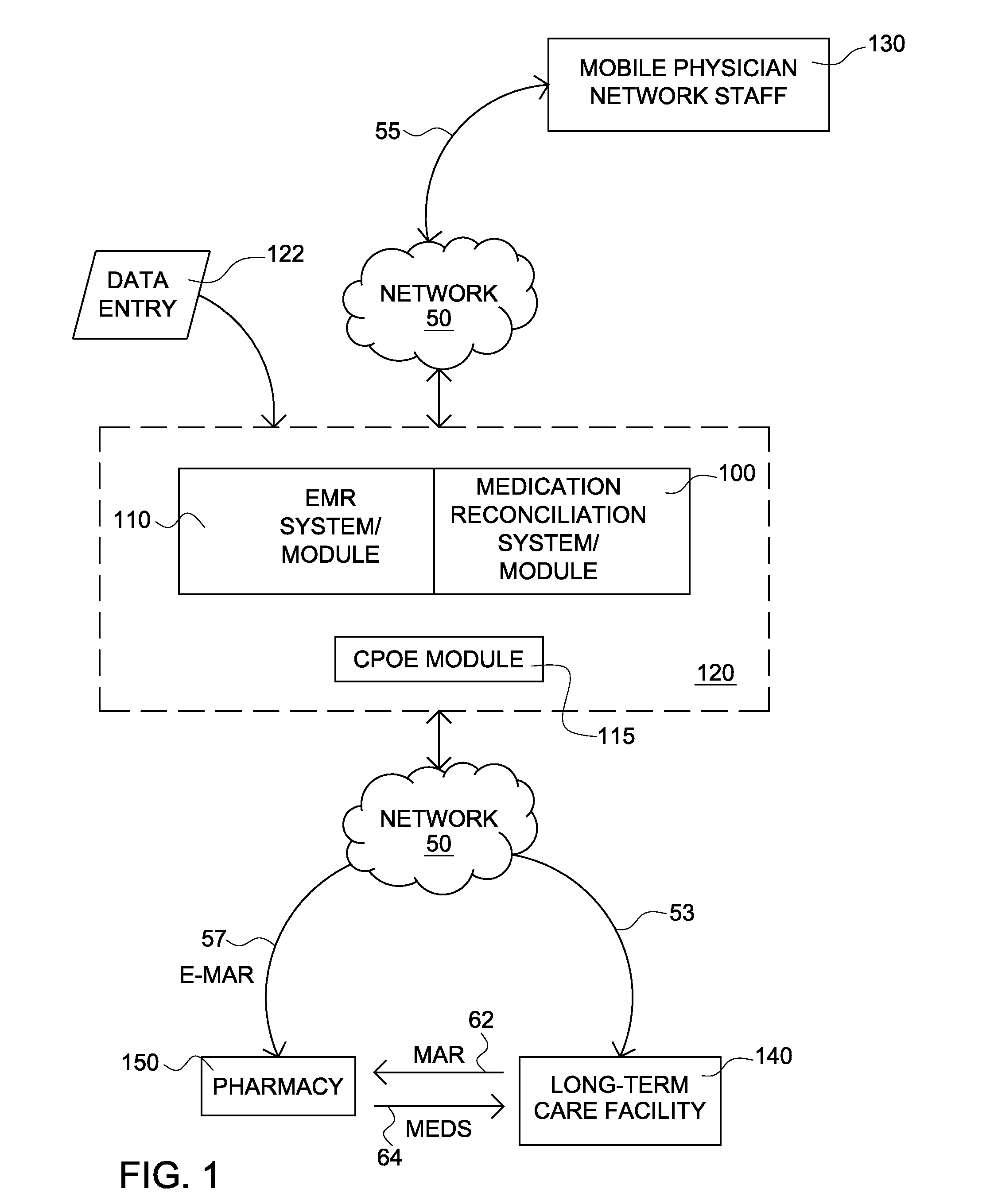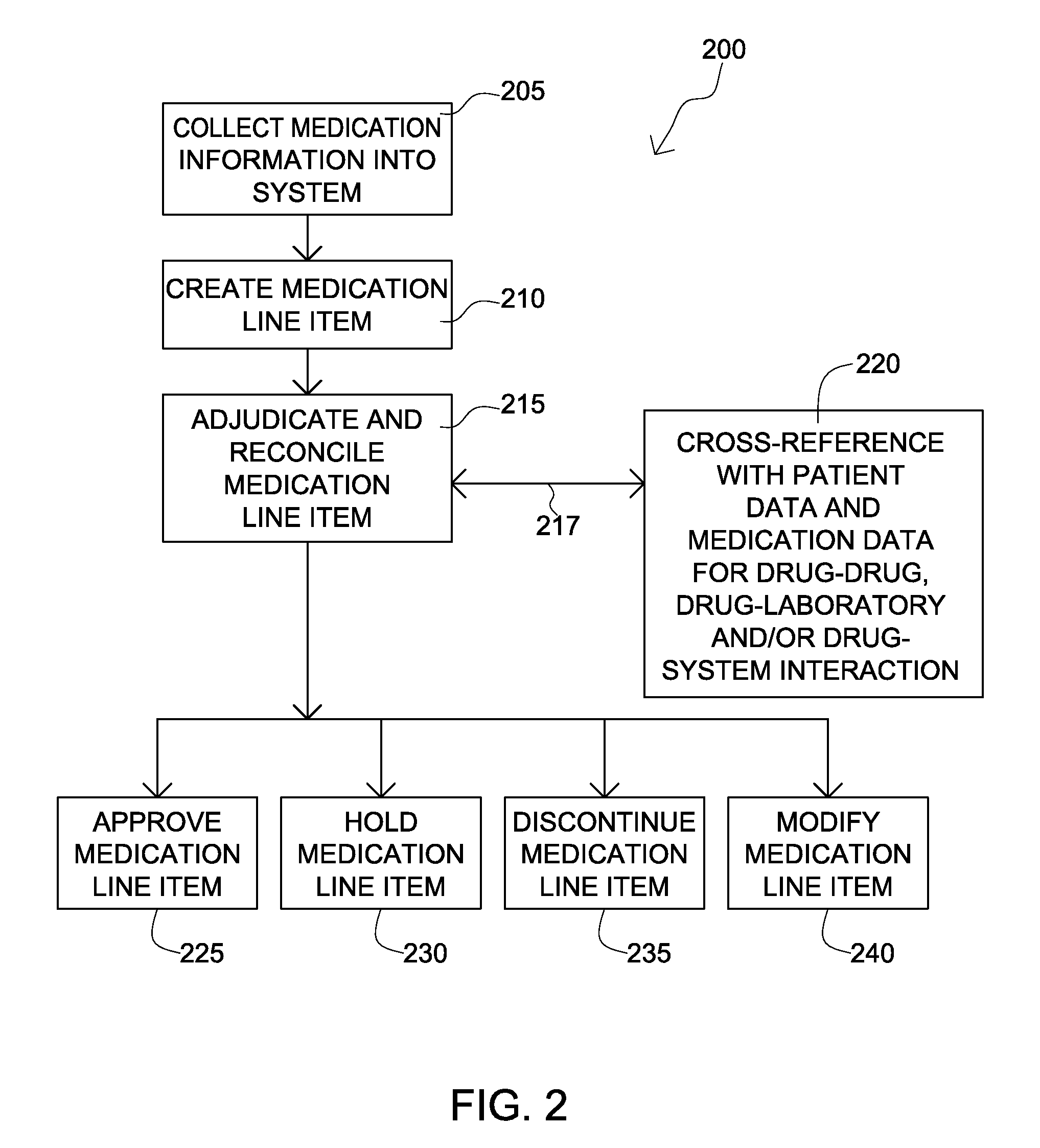Medication Reconciliation System and Methods of Use
a technology of medication reconciliation and medical reconciliation, applied in the field of medication reconciliation system and methods of use, can solve the problems of not being able to complete important functions, and not being able to achieve the completion of important functions insufficiently or not being able to complete them
- Summary
- Abstract
- Description
- Claims
- Application Information
AI Technical Summary
Problems solved by technology
Method used
Image
Examples
Embodiment Construction
Embodiments of the medication reconciliation system and methods ensure that all medications are appropriately and deliberately continued, discontinued, or modified by health care providers during the continuum of care in long-term care facilities. As part of a larger patient care management system, the medication reconciliation system utilizes various subsystems and modules to enable effective and efficient medication reconciliation processes in long-term care facilities.
Embodiments of the medication system comprise modules that work in conjunction with the EMR system. A patient's medication list is documented and actively managed electronically by a plurality of healthcare providers such as those temporarily on-site at the long-term care facility as well as the long-term facility care staff permanently on-site. Key features of the medication reconciliation system and methods of use are its simplicity of data entry and line item verification process. Given these and other features o...
PUM
 Login to View More
Login to View More Abstract
Description
Claims
Application Information
 Login to View More
Login to View More - R&D
- Intellectual Property
- Life Sciences
- Materials
- Tech Scout
- Unparalleled Data Quality
- Higher Quality Content
- 60% Fewer Hallucinations
Browse by: Latest US Patents, China's latest patents, Technical Efficacy Thesaurus, Application Domain, Technology Topic, Popular Technical Reports.
© 2025 PatSnap. All rights reserved.Legal|Privacy policy|Modern Slavery Act Transparency Statement|Sitemap|About US| Contact US: help@patsnap.com



